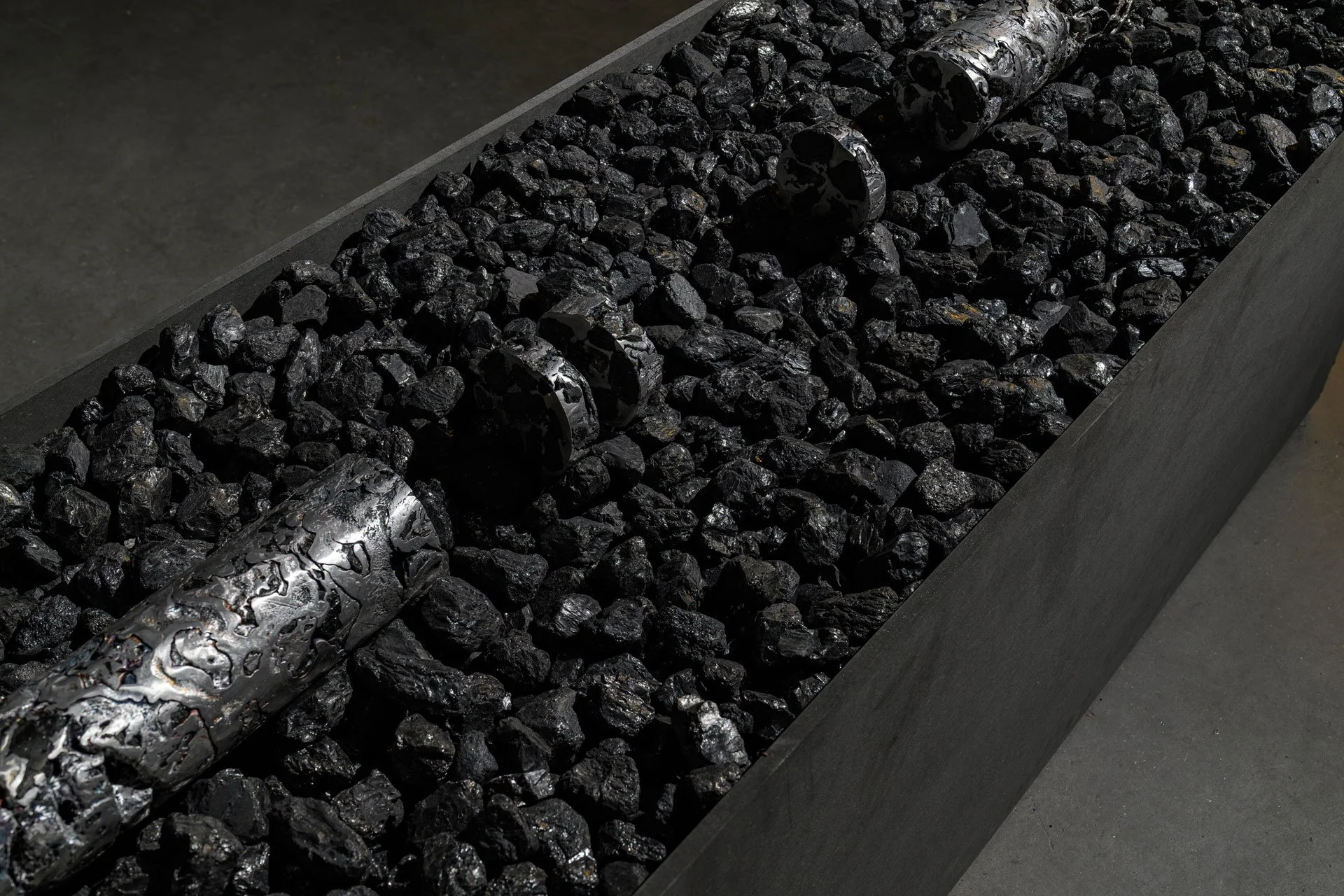
Traces and Tinkerings of Technology: An Interview with Maria Komarova
In attending Maria Komarova's performance, Léa Shamaa was dazzled by the musical potentiality of the sounds of everyday life. Especially by orchestrating technological objects, which our ears catch snippets of in our everyday lives, Komarova’s performance mixes the traces of technology we leave on Earth and repurposes them; leaving new kinds of technological traces on us.
Maria Komarova performing “Krajïna” during FIBER Festival 2024. Photo credit: Alex Heuvink
On Sunday June 5, the last day of FIBER Festival 2024, the sound art performances of the Neighbouring Frequencies programme resonated deeply in the ears of the audience at de Brakke Grond. Maria Komarova, presenting her piece Krajïna, where she displayed her composition through the use of found, created, and technical objects and their potential to create sounds outside of their conventional uses.
Working with performing arts, scenography, sound and installation art, Maria Komarova is an interdisciplinary artist interested in the sonic and visual potential of the non-human world, with a focus on creating spatial settings through use of DIY electro-acoustic objects in her performances and installations. Maria has composed several sound objects, such as "555 Bugs", and "behind the tune". Starting in January 2023, "Krajïna" presents a poetic gathering of objects found on the coast of northern Portugal, field recordings and different electronics.
During her performance, I was charmed by the different kinds of objects laid out on the table, and more particularly how Maria weaved each of them into a technological orchestra. With each interaction, the individual sounds flowed into each other, creating a whole soundscape out of different unique parts. In this interview, I speak with Maria about her approach to finding objects to be included in her composition, the artistic process behind the project, and how it connects to a more-than-human understanding of life.
“Krajïna”. Photo credit: Vicente Mateus
Léa Shamaa: Hey, Maria! Could you start us off by explaining who you are and what you did at FIBER Festival this year?
Maria Komarova: So my name is Maria Komarova. At Fiber, I presented my new project [“Krajïna”], even though I'm actually having quite some difficulties in distinguishing between the old and new works, because for me, the process is actually the most important.
I wouldn't say that it's a new piece because it's a continuation of what I have been doing. And Krajïna is a project which explores the potential of using electronics and very basic means of technology for sound production, this includes found objects and objects which seemingly lack the purpose or function of sound.
What does the project mean to you personally?
In a way, it relates to some places where I work because I'm used to travelling quite a lot, and I usually work in different locations. So, somehow the objects which are part of this performance are part of my artistic practice in relation to these places. So, collecting and finding objects is quite important for me and also helps me think creatively.
I would say that it is very personal, yes. And also because I cannot really separate these things from each other, nor from my own life in a way. So I cannot say that this is my work or my free time, because these things are very much merged in what I enjoy doing.
Maria Komarova performing Krajïna during FIBER Festival 2024. Photo credit: Alex Heuvink
This year, FIBER Festival's theme was Outer/Body. In your words, how does “Krajïna” relate to this theme?
Something which fascinates me at the moment, not necessarily within this work, but, in general is the interconnection between us and technology and the internal influences between both.
For example, the adaptability of the body to technology and vice versa are very much interconnected. For me, it's very difficult to say "this is a natural environment" and "this is a technological environment" because technology also becomes an environment in itself. What fascinates me are the traces of technology which are left on our bodies and the traces which our bodies leave on technology.
I read on your website that many of the objects you found for this project were on the coast of Northern Portugal. How do you decide whether or not you can use something? What does the selection process look like?
This is very hard to say as this is very intuitive. Of course, the electronic parts are what I plan very well in order to be able to build things, especially taking into account that now, it's very hard to find things in physical shops.
So because the physical shops disappear together with their repair stores, it somehow becomes a very alienated field—a field of experts. And when I started working with electronics, I just ended up in some electronic store. I didn't have any knowledge, and now this shop is closed, so I imagined that if I would now decide to work with electronics, it would be maybe a bit more difficult. It's based on my curiosity but when I know that I need a certain type of material, I search for this
So you're imagining the sound first and thinking: "Oh, what could produce this?"
Well, in this project, I work with electret mic capsules. And it's a very basic mic, which you can build very easily. So, I was curious about how to work with this type of microphone, not only as a tool, but also as an object. So how to make this tool, which is commonly used for amplifying sound, not only as an output, but also as part of the process.
Beautifully put. When watching your performance, I felt that the timing of the music was very nonlinear. It didn't necessarily follow a certain scale, but there were many rhythms coming together in one. So how do you compose this?
I need to know very well what am I going to do and in which order, not only for the sake of sound, but also technically, because there is a lot of manipulation. And as soon as I adjust some objects in the performance, then sometimes it's more difficult to adjust it back, let's say.
Most of the time I know very well what I need to do, but sometimes things get out of control. So I actually need to practise quite a lot just in order to have a bit more control over the things which can sometimes misbehave.
“Krajïna”. Photo credit: Vicente Mateus
I thought that was really nice actually, the “getting out of control” part. The idea which comes to mind is how us as humans use digital technologies for their function. But, in your performance I felt like they took on a life of their own, and that blended in with the sounds for me.
Yes, in the end, it's the process of making these things which is very interesting. These coincidences or failures are often the most interesting moments because you discover things which you don't expect. You discover things which you cannot plan in advance. So it's very important for me to keep this moment part of the outcome.
My last question relates to what we were just talking about actually. Would you say that your work relates to this more-than-human view on life? As in, how much do you like to interact with the objects versus having them do their own thing?
I like to find settings within which the objects can operate by themselves. I had played guitar in a band at some point, but in this type of practice, I'm interested in providing the conditions for things to exist. So my position is that of the technician who is facilitating the behaviour of these objects, because I am not producing music myself, but I facilitate the conditions for producing the music by these things.
I'm very interested in discovering different creative capacities of materials and how it relates to framing the non-human agency, also in terms of performativity, since all these materials are incredibly creative. It's very interesting to touch upon this in the art field because it's very hard to say that we are the authors because we collaborate with the substances and materials which we use. So if clay has certain properties, it's not only about me who has the ability to shape the object, but it's also the capacities of this material to take the shape and keep it within a certain amount of time.
That's very well put. It’s not about working on, but working with the material. Thank you for your time and sharing your thoughts with me.
Read more

ABOUT THINKING BODIES
Thinking Bodies was conceptualised as an effort to build an exploratory body of knowledge(s), that draws upon the festival’s theme and weaves together perspectives, writing styles and formats. Drawing from the theme of the FIBER Festival 2024 edition, Outer/Body, we invited aspiring and emerging writers from a multiplicity of backgrounds to share their contributions, ranging from essays to interviews to poetries, resulting in a rich archive of knowledge.

























